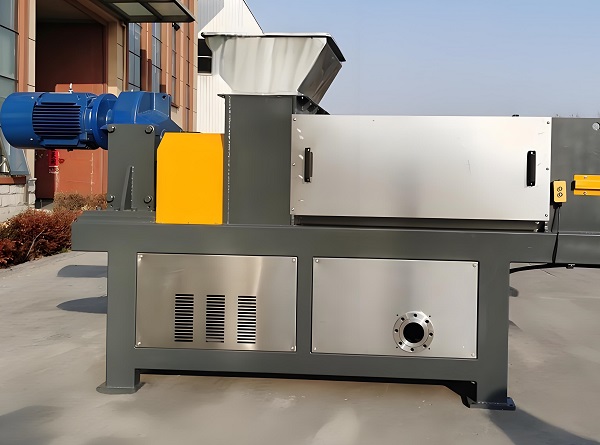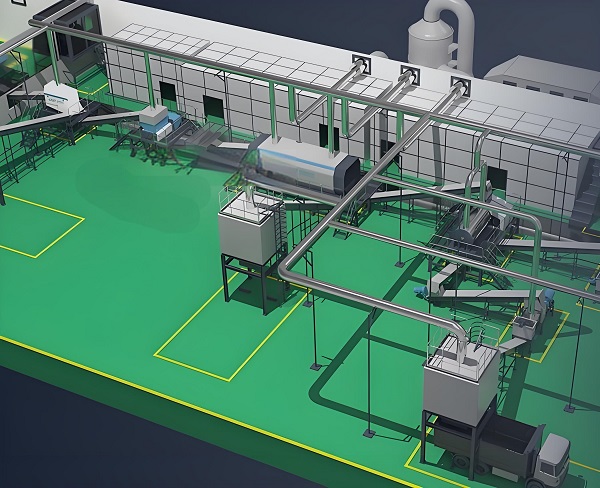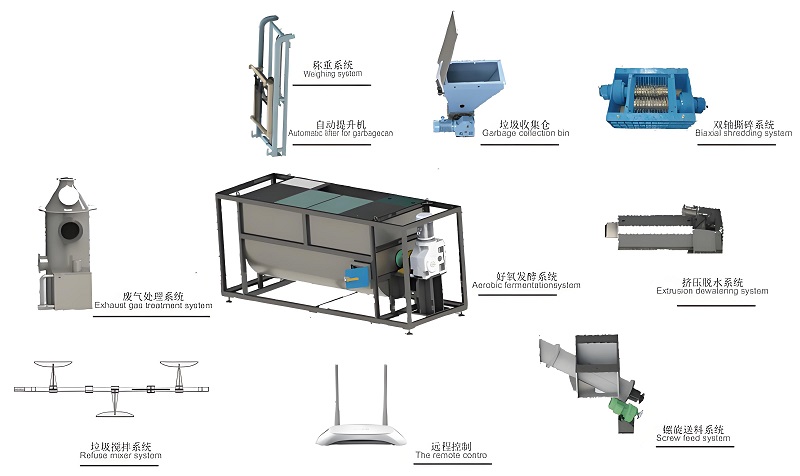The kitchen waste recycling system is a comprehensive system, which realizes the recycling and reduction of waste through a series of treatment of kitchen waste. The system mainly consists of the following key parts:
A. Pretreatment system
Pretreatment system is the primary link of kitchen waste recycling, and its main purpose is to conduct preliminary classification, crushing, dehydration and other treatment of kitchen waste, so as to facilitate subsequent treatment and utilization.
Manual sorting: separate the recyclable materials and organics in the kitchen waste to ensure the efficiency and effect of subsequent treatment.
Crushing equipment: such as crusher, which is used to finely crush large kitchen waste for subsequent treatment and transportation.

Dehydration equipment: such as screw dehydrator, used to remove excess water in kitchen waste, reduce waste volume and weight and reduce treatment cost.
B. Biochemical treatment system
Biochemical treatment system is the core part of kitchen waste recycling. Through the fermentation of microorganism, the organics in the kitchen waste are converted into fertilizer, biomass and other resources.
Microbial fermentation equipment: such as organic waste biological processor, provide suitable growth environment for microorganism and promote decomposition and transformation of organic matter by controlling temperature, humidity, oxygen and other conditions.
Aerobic fermentation and anaerobic fermentation: select appropriate treatment process according to different fermentation modes of microorganism to maximize the utilization of organics in kitchen waste.

C. Three-phase separation system
The three-phase separation system is mainly used to treat the mixture of oil, water and slag in kitchen waste and separate them into different components for the convenience of subsequent utilization and treatment.
Impurity removal pulping machine: used to remove impurities in kitchen waste and make it slurry.
Three-phase separator: separate the oil, water and slag in the pulp kitchen waste through physical or chemical methods. The separated oil and grease can be used to produce energy products such as biodiesel, the solid slag can be used for breeding of black water machine, and the wastewater needs to be further treated.
D. Pollution control system

The pollution control system is the key part to ensure that the kitchen waste recycling process meets the environmental standards, mainly including the waste gas treatment system and the waste water treatment system.
Waste gas treatment system: it is used to treat harmful gases generated during kitchen waste treatment, such as ammonia gas and hydrogen sulfide, to ensure environmental safety.
Waste water treatment system: purify the waste water generated in the kitchen waste treatment process to meet the discharge standard.
E. Electronic control and intelligent system
Electronic control and intelligent system is the "brain" of kitchen waste recycling system, which is responsible for controlling the operation and monitoring of the whole system.
Electronic control system: including various circuit integration modules, used to control the operation of pre-treatment system, biochemical treatment system, three-phase separation system and other equipment.
Intelligent system: realize real-time monitoring and data analysis of kitchen waste recycling process, optimize processing technology and improve processing efficiency through Internet of Things, big data and other technologies.

F. Auxiliary Transport and Storage Equipment
Auxiliary transportation and storage equipment is an indispensable part of the kitchen waste recycling system, used for the transportation and storage of materials and the packaging of final products.
Conveying equipment: such as conveyor belt and elevator, etc., used for conveying kitchen waste from pre-treatment system to biochemical treatment system, three-phase separation system, etc.
Storage Equipment: Used to store intermediate and final products produced during processing, such as fertilizers, biomass fuels, etc.
To sum up, the kitchen waste recycling system is a comprehensive system composed of multiple parts. Each part cooperates with each other to jointly realize the recycling and reduction of kitchen waste.
Save Time! Get A Detailed Quotation Quickly.
